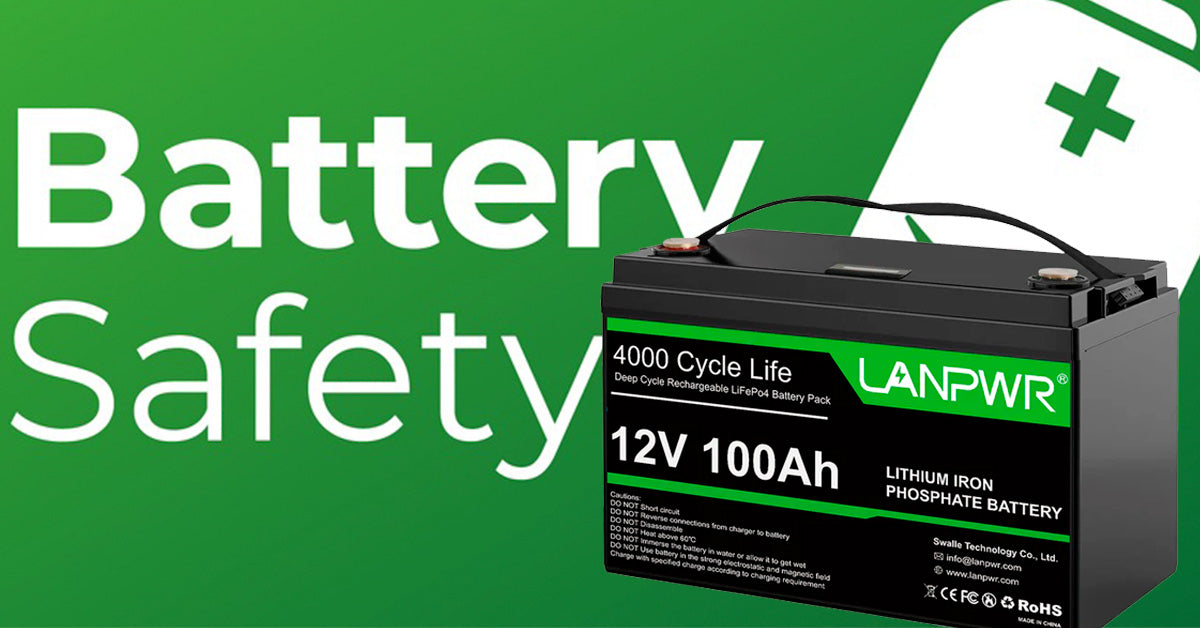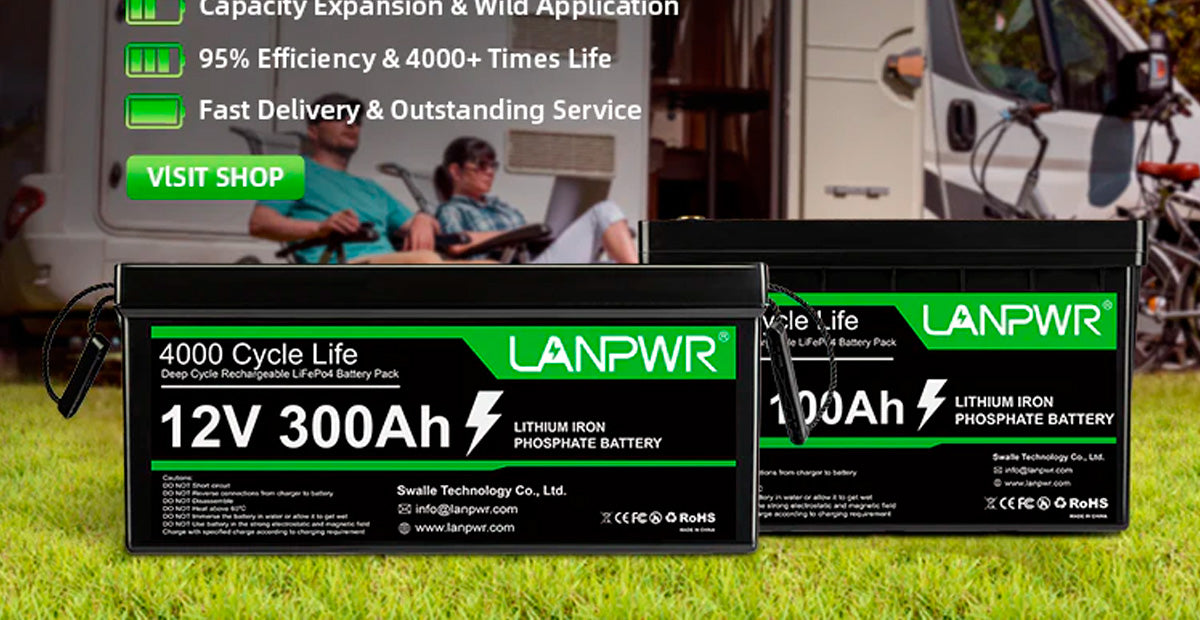Introduction
In off-grid living, where traditional power grid connectivity is unavailable or unreliable, robust energy storage solutions become paramount. Proper maintenance of these storage systems enhances their efficiency and extends their operational lifespan, making it a crucial practice for sustainability. Among various battery technologies, Lithium Iron Phosphate (LiFePO4) batteries are increasingly favored for off-grid applications due to their superior characteristics and long-term reliability.
Understanding LiFePO4 Batteries for Off-Grid Energy Storage
What is a LiFePO4 Battery?
LiFePO4 batteries represent a significant advancement in battery technology, utilizing lithium iron phosphate as the cathode material. This technology offers several advantages over traditional batteries, including enhanced safety features stemming from the battery's inherent stability and resistance to high temperatures. This makes them particularly suitable for use in environments with paramount safety and reliability. Additionally, their long cycle life and consistent discharge voltage make ideal for the demanding needs of off-grid energy systems.
Comparatively, LiFePO4 batteries offer a compelling alternative to AGM (Absorbed Glass Mat) batteries, which have been popular in off-grid setups due to their lower upfront cost. However, despite the higher initial investment, LiFePO4 batteries outperform AGM in terms of efficiency, charge cycles, and overall lifetime cost savings. Their ability to withstand deep discharge cycles without significant degradation makes them more suitable for energy-intensive applications typical of off-grid living.

Benefits of LiFePO4 Batteries for Off-Grid Use
LiFePO4 batteries' high efficiency and longer lifespan translate directly into fewer replacements and lower long-term costs. Their deep cycle capability allows them to maintain a high level of performance even under the strain of daily heavy use, which is common in off-grid energy systems. Moreover, the robustness of LiFePO4 batteries in terms of thermal and chemical stability enhances the safety of the energy storage system, a critical factor in remote and unsupervised installations.
These batteries are also environmentally friendly compared to their lead-acid counterparts. With no harmful emissions and a non-toxic composition, LiFePO4 batteries align well with the eco-conscious ethos of off-grid living. Their stability reduces the risk of leaks and spills, which can be particularly hazardous in isolated environments, thereby safeguarding both the user and the surrounding ecosystem.
Choosing the Right LiFePO4 Battery for Your Needs
Assessing Battery Capacity and Size
Determining the appropriate size and capacity of a LiFePO4 battery is essential for achieving optimal performance in an off-grid system. A battery's capacity, measured in ampere-hours (Ah), indicates the total energy it can store, directly impacting how much power is available for daily use. Users must evaluate their typical energy usage and ensure that the battery's capacity exceeds this to avoid frequent deep discharges, affecting its lifespan.
Moreover, considering the physical size and weight of the battery is crucial, especially in scenarios where space and load are constraints. Off-grid systems often require a compact setup, and the relatively lightweight and compact design of LiFePO4 batteries makes them ideal for such applications. It’s essential to balance these factors with the system's overall energy requirements to ensure continuous, reliable power without oversizing, which can unnecessarily elevate the system's cost.
Cost Considerations
The initial cost of LiFePO4 batteries is higher than that of some traditional battery types, which may seem daunting to those new to off-grid living. However, when evaluated in terms of cost per cycle, LiFePO4 batteries are more economical over time. Their durability and ability to handle higher charge and discharge cycles mean that long-term savings can significantly offset the upfront investment.
Additionally, LiFePO4 batteries' minimal maintenance requirements reduce ongoing costs related to battery care. Unlike other battery types that might need regular checks and maintenance, LiFePO4 batteries require less frequent servicing, an essential consideration for remote or inaccessible systems.
Installation and Initial Setup
Planning Your Battery Installation
Correct installation is critical for maximizing the performance and safety of LiFePO4 batteries in an off-grid setup. The installation process should include carefully planning the battery's location to ensure it is kept in a cool, dry place away from direct sunlight. Proper ventilation must be ensured to dissipate heat generated during charging and discharging. It is also essential to follow manufacturer guidelines strictly to avoid installation errors that could affect performance or safety.
Safety considerations are paramount, especially in systems isolated or exposed to harsh environmental conditions. This includes securing the battery to prevent movement, protecting it from moisture and extreme temperatures, and ensuring all connections are tight and corrosion-free. These steps help maintain the battery system's efficiency and prevent potential hazards.
Integrating with Off-Grid Renewable Energy Sources
Integrating LiFePO4 batteries with renewable energy sources such as solar panels and wind turbines requires understanding how these components interact. Effective integration ensures energy is efficiently captured, stored, and delivered as needed. This involves configuring the system to maximize the battery's charge cycles and lifespan by avoiding overcharging and deep discharges.
Optimizing the energy storage system also involves using charge controllers and management systems that help regulate energy flow and protect the battery from conditions that could shorten its life. For instance, an intelligent charge controller that adjusts charging rates based on the battery's condition and the available energy can significantly enhance system efficiency.

Routine Maintenance for LiFePO4 Batteries
Daily and Monthly Maintenance Checks
Regular maintenance checks are crucial to ensuring the long-term health of LiFePO4 batteries. Daily inspections include checking for any signs of damage or leakage, ensuring the connections are secure and corrosion-free, and monitoring the battery's state of charge. Monthly checks can be more detailed, including testing battery voltage and resistance to ensure they are within expected ranges.
Using specialized monitoring tools that provide real-time data on battery health can help detect potential issues before they become serious. These tools can alert users to conditions that deviate from the norm, allowing timely interventions to prevent damage and extend the battery's life.
Long-Term Health and Performance Optimization
Maintaining the performance of LiFePO4 batteries over the long term involves more than routine checks. It includes understanding the battery's operational limits and ensuring they are not exceeded. Techniques such as balancing the cells within the battery to ensure even charge and discharge cycles can significantly affect their efficiency and lifespan.
Seasonal adjustments are also crucial, as temperature changes can affect battery performance. Implementing measures to insulate the battery during cold weather and to cool it during hot periods can help maintain its efficiency. Preventive measures prolong the battery's life and ensure it operates at peak efficiency regardless of external conditions.
Advanced Maintenance Techniques
Troubleshooting Common Issues
Even with the best maintenance practices, issues can arise with LiFePO4 batteries. Joint problems may include a sudden drop in capacity, unusual discharge patterns, or issues with battery charging. Understanding these symptoms and how to troubleshoot them effectively can help maintain continuous operation and prevent damage to the battery.
When troubleshooting, it’s essential to refer to the manufacturer’s guidelines and consider using diagnostic tools to help identify the specific issues. In cases where problems persist, seeking professional help can be the best action to prevent further damage and ensure safety.
Upgrading and Recycling LiFePO4 Batteries
As battery technology evolves, upgrading to newer models can offer better efficiency and performance. However, it is essential to consider the environmental impact of disposing of old batteries. Recycling LiFePO4 batteries is critical as it helps recover valuable materials and prevents hazardous substances from entering the ecosystem.
When upgrading, it’s also essential to assess the compatibility of new batteries with the existing system to ensure they can be integrated smoothly. These factors contribute to system efficiency and support sustainable practices in off-grid living.
Conclusion
Adopting robust maintenance practices for LiFePO4 (Lithium Iron Phosphate) batteries is crucial for anyone relying on off-grid energy systems. These batteries are a core component in such systems, where consistent and reliable energy supply is paramount. Proper care and maintenance not only extend the life of these batteries but also ensure their peak performance. This is essential for delivering a reliable and efficient power supply, especially in remote locations where traditional energy infrastructure is absent or unreliable. By maintaining LiFePO4 batteries correctly, users can avoid frequent replacement costs and enjoy sustained energy availability, thus enhancing the overall efficiency of their off-grid systems.
Additional Resources
For individuals new to off-grid living or those looking to enhance their system's performance, various resources provide detailed insights and practical advice on maintaining LiFePO4 batteries. These resources are invaluable as they offer:
- Guidelines on Regular Maintenance: Detailed steps on checking and maintaining LiFePO4 batteries to ensure they remain in optimal condition.
- Troubleshooting Tips: Solutions to common issues that might arise with these batteries, helping users to quickly address problems without compromising the system’s functionality.
- Upgrade Advice: Information on the latest advancements in battery technology and advice on when to consider upgrading to newer models or systems for better performance.
- Safety Practices: Essential safety tips to prevent accidents during installing, maintaining, and operating LANPWR LiFePO4 batteries in off-grid systems.














Leave a comment
This site is protected by hCaptcha and the hCaptcha Privacy Policy and Terms of Service apply.